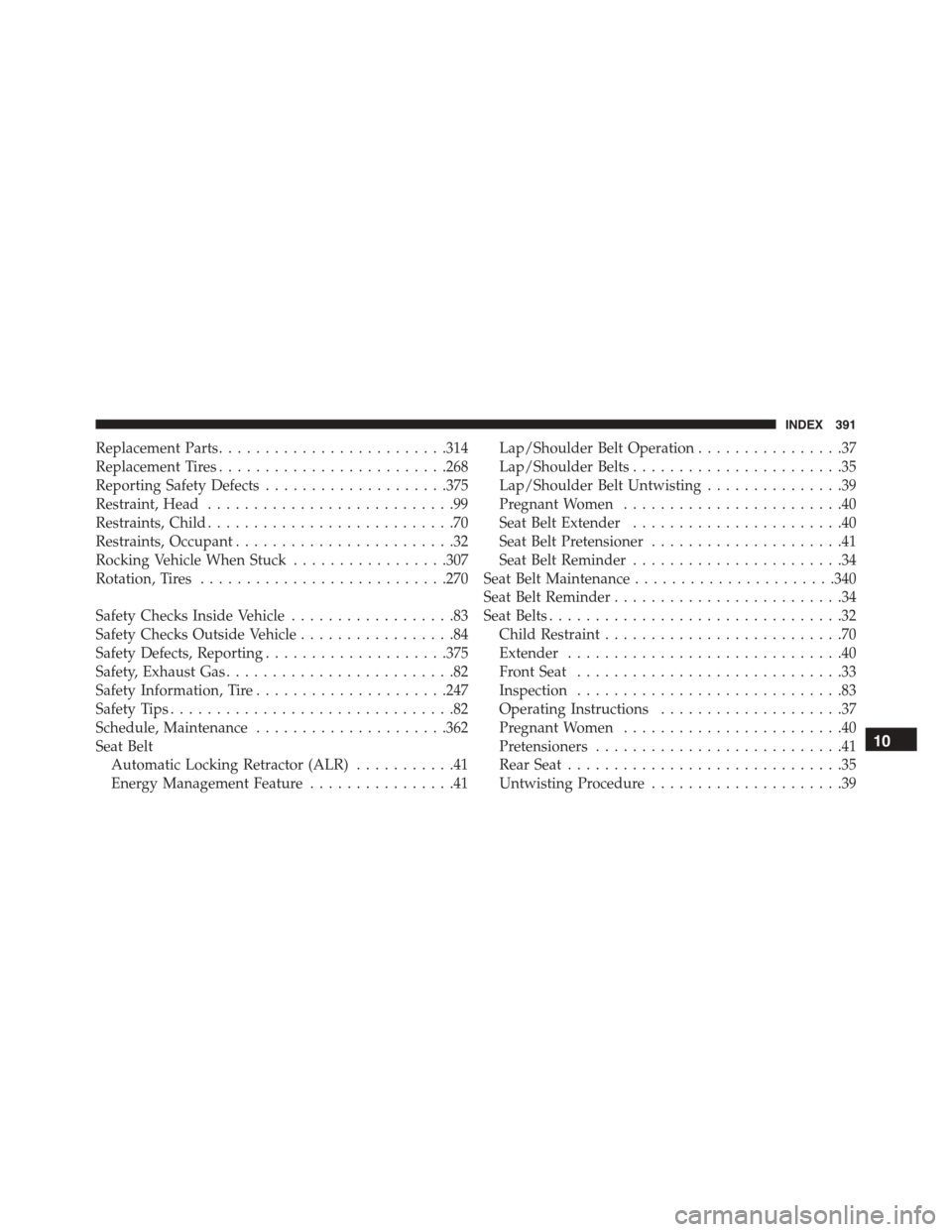Page 81 of 400
There is a tether strap anchor located behind
the child tether access cover behind the passen-
ger seat. To attach a child restraint tether strap
to the anchor:
1. Move the seat forward.
2. Move the seatback to its full forward position.
3. Remove the child tether access cover by prying either
side with a screwdriver or similar tool, as shown.
Child Seat Tether Access Cover
2
THINGS TO KNOW BEFORE STARTING YOUR VEHICLE 79
Page 82 of 400
NOTE:While the child tether is in use, keep the access
cover in a safe place so that it can be replaced after use of
the child tether.
4. Pass the child restraint tether hook through either
opening in the seatback underneath the head restraint.
5. Attach the tether hook to the anchor loop.
6. Move the seat to its farthest rearward position. Apply
body pressure to the seat to be sure the seat adjusters
have latched.
7. Return the seatback to an upright position.
Child Seat Tether Anchor
Tether Hook
80 THINGS TO KNOW BEFORE STARTING YOUR VEHICLE
Page 83 of 400

8. Remove slack from the tether strap according to the
child restraint manufacturer ’s directions.
WARNING!
An incorrectly anchored tether strap could lead to
increased head motion and possible injury to the
child. Use only the anchorage position directly be-
hind the child seat to secure a child restraint top
tether strap.
Transporting Pets
Air Bags deploying in the front seat could harm your pet.
An unrestrained pet will be thrown about and possibly
injured, or injure a passenger during panic braking or in
a collision.
Pets should be restrained in the rear seat in pet harnesses
or pet carriers that are secured by seat belts.
BREAK-IN RECOMMENDATIONS
A long break-in period is not required for the drivetrain
(engine, transmission, and rear axle) in your new vehicle.
Following these few simple guidelines is all that is
necessary for a good break-in.
For the first 500 miles (800 km):
•Keep your vehicle speed below the legal, posted speed
limit and your engine speed below 4,000 RPM.
•Avoid driving at a constant speed, either fast or slow,
for long periods.
•Do not make any full throttle starts and avoid full
throttle acceleration.
•Use the proper gear for your speed range.
•Wait until the engine has reached normal operating
temperature before driving at the recommended maxi-
mum break-in speed.
2
THINGS TO KNOW BEFORE STARTING YOUR VEHICLE 81
Page 384 of 400

Radiator (Coolant Pressure)................330
Carbon Monoxide Warning...................82
Car Washes.............................337
Cellular Phone...........................196
Chains, Tire.............................270
Chart, Tire Sizing.........................249
Check Engine Light (Malfunction Indicator Light) . .151
Checking Your Vehicle For Safety...............82
Checks, Safety............................82
Child Restraint............................70
Child Restraints
Booster Seats...........................75
Child Restraints.........................70
Infants And Child Restraints................73
Installing Child Restraints Using The Vehicle Seat
Belt..................................76
Older Children And Child Restraints..........73
Using The Top Tether Anchorage.............78
Clean Air Gasoline........................278
Cleaning
Wheels...............................338
Windshield Wiper Blades..................323
Climate Control..........................196
Clutch Fluid.............................335
Compact Spare Tire........................265
Contract, Service..........................373
Coolant Pressure Cap (Radiator Cap)...........330
Cooling System...........................326
Adding Coolant (Antifreeze)...............328
Coolant Capacity.......................357
Coolant Level..........................327
Disposal Of Used Coolant.................330
Drain, Flush, And Refill...................327
Inspection............................331
Points To Remember.....................331
Pressure Cap..........................330
Radiator Cap..........................330
Selection Of Coolant (Antifreeze)............328
382 INDEX
Page 393 of 400

Replacement Parts.........................314
Replacement Tires.........................268
Reporting Safety Defects....................375
Restraint, Head...........................99
Restraints, Child...........................70
Restraints, Occupant........................32
Rocking Vehicle When Stuck.................307
Rotation, Tires...........................270
Safety Checks Inside Vehicle..................83
Safety Checks Outside Vehicle.................84
Safety Defects, Reporting....................375
Safety, Exhaust Gas.........................82
Safety Information, Tire.....................247
Safety Tips...............................82
Schedule, Maintenance.....................362
Seat Belt
Automatic Locking Retractor (ALR)...........41
Energy Management Feature................41
Lap/Shoulder Belt Operation................37
Lap/Shoulder Belts.......................35
Lap/Shoulder Belt Untwisting...............39
Pregnant Women........................40
Seat Belt Extender.......................40
Seat Belt Pretensioner.....................41
Seat Belt Reminder.......................34
Seat Belt Maintenance......................340
Seat Belt Reminder.........................34
Seat Belts................................32
Child Restraint..........................70
Extender..............................40
Front Seat.............................33
Inspection.............................83
Operating Instructions....................37
Pregnant Women........................40
Pretensioners...........................41
Rear Seat..............................35
Untwisting Procedure.....................39
10
INDEX 391